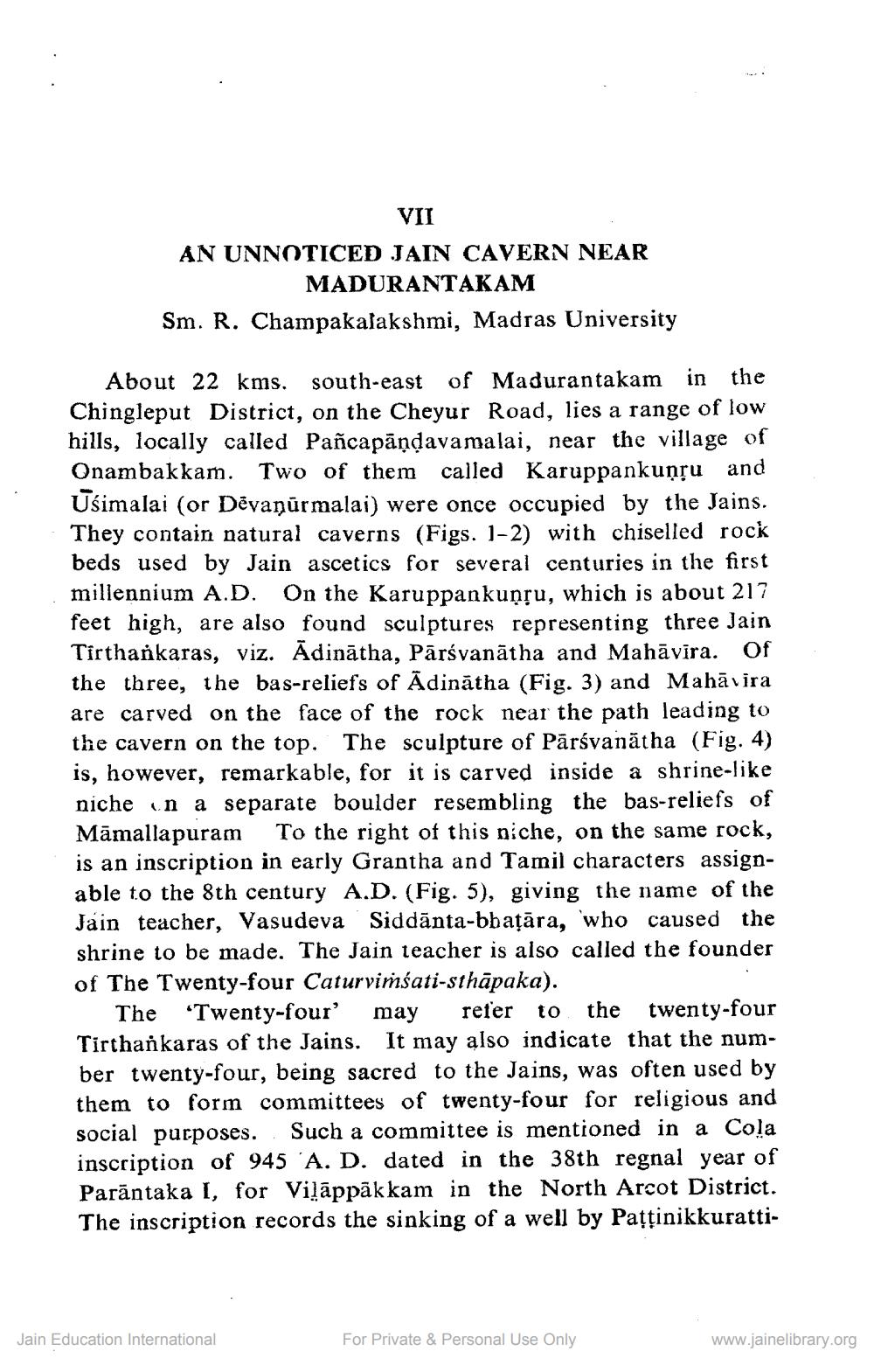________________
VII AN UNNOTICED JAIN CAVERN NEAR
MADURANTAKAM Sm. R. Champakalakshmi, Madras University
About 22 kms. south-east of Madurantakam in the Chingleput District, on the Cheyur Road, lies a range of low hills, locally called Pañcapāņdavamalai, near the village of Onambakkam. Two of them called Karuppankuņņu and Usimalai (or Dēvaņūrmalai) were once occupied by the Jains. They contain natural caverns (Figs. 1-2) with chiselled rock beds used by Jain ascetics for several centuries in the first millennium A.D. On the Karuppankuņņu, which is about 217 feet high, are also found sculptures representing three Jain Tirthankaras, viz. Ādinātha, Pārsvanātha and Mahāvīra. Of the three, the bas-reliefs of Ādinātha (Fig. 3) and Mahā vira are carved on the face of the rock near the path leading to the cavern on the top. The sculpture of Pārsvanātha (Fig. 4) is, however, remarkable, for it is carved inside a shrine-like niche in a separate boulder resembling the bas-reliefs of Māmallapuram To the right of this niche, on the same rock, is an inscription in early Grantha and Tamil characters assignable to the 8th century A.D. (Fig. 5), giving the name of the Jain teacher, Vasudeva Siddānta-bbațāra, who caused the shrine to be made. The Jain teacher is also called the founder of The Twenty-four Caturviņśati-sthāpaka).
The 'Twenty-four' may refer to the twenty-four Tirthankaras of the Jains. It may also indicate that the number twenty-four, being sacred to the Jains, was often used by them to form committees of twenty-four for religious and social purposes. Such a committee is mentioned in a Cola inscription of 945 'A. D. dated in the 38th regnal year of Parāntaka I, for Vilāppāk kam in the North Arcot District. The inscription records the sinking of a well by Pațținikkuratti
Jain Education International
For Private & Personal Use Only
www.jainelibrary.org




